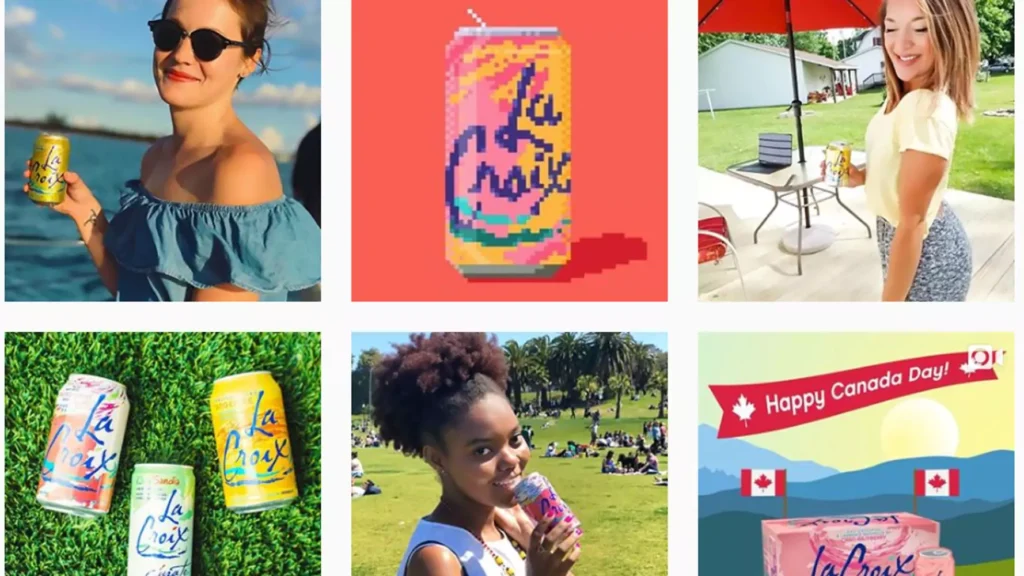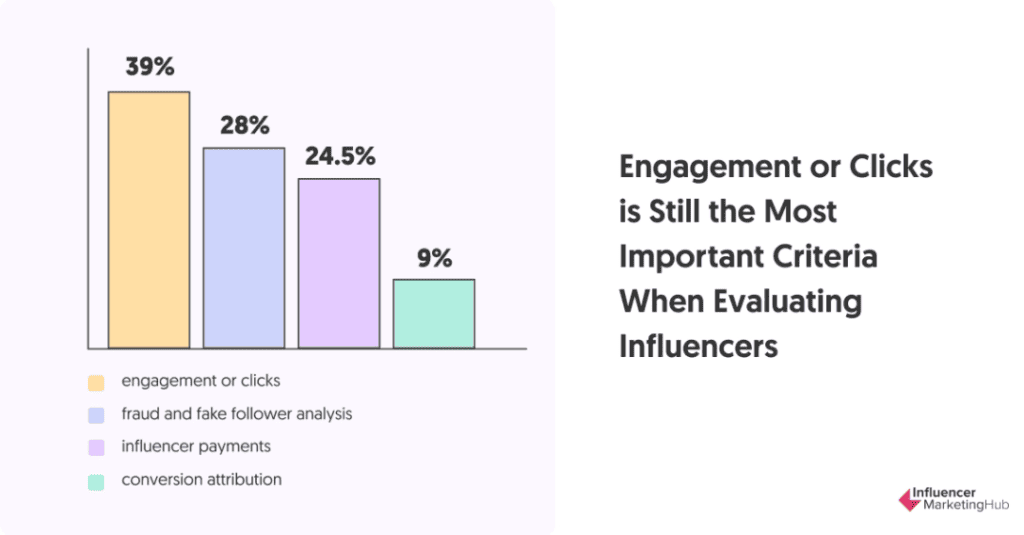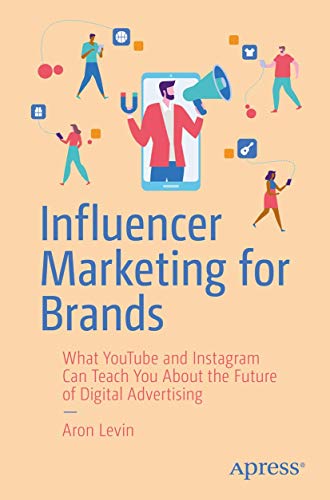Micro-influencer Marketing: Authenticity and Engagement
Micro-influencer marketing, a form of social media advertising, has emerged as an effective way for brands to connect with their target markets. But what is micro-influencer marketing, and how does it differ from traditional influencer marketing?
Micro-influencer marketing involves partnering with people with smaller followers on social media than traditional influencers. Micro-influencers typically have fewer followers but are more engaged with those they have. This makes them more relatable and trusted by their followers, driving higher engagement rates for marketers.
Unlike traditional influencer marketing, which focuses on working with content creators who often have follower counts in the thousands or millions, micro-influencer advertising prioritises authenticity, engagement and relatability. It leverages the ability of these lower-reach influencers to build communities around shared interests – enabling brands to make real connections with potential customers.
Table of Contents
The Benefits of Working With Micro-Influencers

Brands can benefit in many ways by partnering with micro-influencers. Firstly, these influencers often achieve higher engagement rates than those with more followers. This is because they have a small but loyal audience that allows them to maintain meaningful interactions. As a result, genuine recommendations and conversions are more likely.
Secondly, working with these influencers is usually cheaper for businesses – making it an ideal choice for brands with smaller budgets. Their lower rates mean brands can team up with several of them and reach a larger audience without spending as much.
Thirdly, such influencers tend to be creative and able to create authentic content that resonates with their audience – something they can do because they specialise in a particular niche area. Their endorsements are more trustworthy and effective based on valuable insight or recommendations.
For example, if a beauty brand wanted to promote its new skincare range, it could work alongside someone who focuses on this area within the influencer category. Creating engaging content, such as tutorials or reviews of the brand's products authentically, increases engagement and raises brand awareness, ultimately encouraging sales.
A further advantage of working with micro-influencers is tapping into niche communities whose interests align closely with those of your target audience. These individuals will already have built up trusted connections within specific industries or interest areas, so their endorsement carries weight when trying to reach demographic groups or market segments that matter most.
How to Find and Choose the Right Micro-Influencers

Selecting the right micro-influencers for your brand is a crucial task. Here are some tips to help you find the perfect fit:
- Define your goals: define what you want to achieve and who you want to reach with a potential influencer.
- Check their engagement on social media: look at how much they interact with their followers and their engagement rates on social media platforms.
- Use influencer discovery tools: use tools that connect brands with micro-influencers, such as Klear, Stack Influence, Shopify Collabs, Neoreach or Traackr, which help find influencers that align with your target audience and values.
- Negotiate fees and agree: discuss compensation expectations and deliverables before signing anything. This will ensure that both parties know what's expected of them.
By following these steps, brands can identify micro-influencers who not only align with their brand values but also have the potential to reach out and engage a target audience effectively.
It's worth noting that it's important not to focus solely on follower count when selecting micro-influencers. At the same time, this is still vital; looking at engagement rates, content relevancy within an influencer's niche area, and the quality of posts can be more telling than the size of following alone.
Researching demographic information about an influencer's audience – including gender breakdowns, locations, and interests – alongside metrics such as click-through rate (CTR), views per post or story swipe-ups can all help brands make informed decisions about partnerships. As well as looking at data points like these, marketers should consider whether the style of content produced by an influencer fits in line with their company image or tone of voice.
- Russell, Amanda (Author)
- English (Publication Language)
- 400 Pages – 10/13/2020 (Publication Date) – Hatherleigh Press (Publisher)
Tips for Running Successful Micro-Influencer Campaigns
Running an effective micro-influencer campaign requires careful planning and execution. Here are some strategies to consider:
- Use campaign-specific hashtags: Create unique hashtags aligned with your brand and campaign objectives. Ask micro-influencers and their followers to use these hashtags to get in front of your niche audience. This can increase brand visibility, generate UGC (user-generated content) and build a community around your campaign. E.g., A fitness apparel brand might create a #FitLifeChallenge campaign, partnering with micro-influencers who encourage their followers to share their fitness journey while wearing the brands' products.
- Leverage user-generated content (UGC): Get micro-influencers to create authentic posts featuring your products or services – it adds credibility and fosters trust among their followers. This could be as simple as getting them to share an experience with the brand or something more organised, like challenges/contests that require UGC to enter. For example, A travel agency might collaborate with some micro-influencers on generating UGC featuring their travel experiences, encouraging the influencers' audience to do the same – leading by example is usually pretty effective in influencer marketing.
- Sponsored posts: Utilise sponsored posts via collaborations with micro-influencers, showing off what's unique about your offer, benefits, etc. These campaigns are suitable for building awareness for new brands/products/services or driving traffic to websites/social media profiles. This works well because you're leveraging the storytelling ability of these influencers/bloggers rather than running ads that talk to people. For, A food/drink client might partner up with food bloggers/influencers who specialise in healthy eating recipes ‘Sponsored by X Brand': They then develop original recipes using X product(s), give away tips/advice based on personal experience + include CTA's driving traffic back towards website/social media feeds etc.
- Tell a story about how they promote you: Collaborate on crafting engaging narratives around your products/services — stories help connect emotionally and increase engagement/sales. For example, A fashion brand might work with a micro-influencer to tell how their clothing line empowers individuals to express their unique style and confidence — ensuring the stories they create resonate with target audiences.
By implementing these tactics, brands can get the most out of their micro-influencer campaigns and forge a strong connection with their target market.
According to research, micro-influencers tend to achieve better engagement rates than macros or celebrities. Their content is more authentic and relatable, allowing them to strike a chord with followers and earn higher trust and engagement.
Examples of Successful Micro-Influencer Marketing

Micro-influencer marketing has been a successful strategy for many brands. La Croix, for example, partnered with micro-influencers to create visually stunning content that showcased their sparkling water uniquely and creatively. By working with micro-influencers whose style aligned with the brand's aesthetic, La Croix was able to reach an engaged audience and generate buzz.
Kimpton Hotels is another brand that has successfully used micro-influencer marketing. The hotel company worked with influencers to highlight hotel experiences and increase brand awareness and bookings. By using authentic stories from these smaller influencers, Kimpton was able to connect with a niche audience interested in luxury travel.

Stitch Fix also uses micro-influencers as part of its marketing strategy. The personal styling service partners with influencers genuinely interested in fashion and style. These influencers can then provide personalised recommendations on their social media channels – crucial for building customer trust.
The Hawaiian Department of Tourism has also embraced the power of smaller influencer partnerships when promoting travel experiences in Hawaii – specifically adventures such as hiking or snorkelling – more widely among travellers who may not have previously considered visiting the state.
Such examples show how effective micro-influence can be across various sectors by collaborating with individuals who connect with their followers online.
Popular Micro-Influencer Marketing Platforms
For brands that want to connect with influencers and manage their campaigns, there are several popular platforms for micro-influencer marketing. Examples include Klear, Stack Influence, Neoreach and Traackr, and Shopify Collabs.
Capabilities generally offered by the platforms include influencer search engines, recruitment tools, analysis of influencers or their followers, influencer relationship management (IRM) tools, and campaign management tools.
Micro-influencer marketing platforms offer an efficient way for brands to discover, collaborate with and measure the performance of micro-influencers on social media cost-effectively across different social media channels.
Brands can use these resources to optimise their influencer marketing strategies. These online services allow brands to find and connect with micro-influencers who may be suitable for the target audience. This saves brand marketers time finding such talent while ensuring they meet or exceed critical sales targets during collaborations.
In addition, these systems have standardised contracts between influencers and advertisers and payment systems that make collaboration much more accessible than via traditional methods offline. The entire process is streamlined from initial discovery through campaign set-up, so a campaign can be executed quickly on each occasion.
- Levin, Aron (Author)
- English (Publication Language)
- 175 Pages – 12/01/2019 (Publication Date) – Apress (Publisher)
Are Micro-Influencers More Effective Within Their Niche Communities?
When it comes to niche communities, micro-influencers are highly effective. They have a deep understanding of specific industries and interest areas, which allows them to create tight-knit, committed followings in those communities. This means they can engage with their audience on a much deeper level – so content resonates more quickly than if created by someone who doesn't know the community.
That means followers trust what micro-influencers say far more than they would if the same message came from a big-time name. This is particularly likely when influencers concentrate on something like fitness or wellness.
In that context, for instance, people who love health-related topics will flock to an influencer about fitness and wellness. So when this kind of person pushes a workout product or shares details about their journey toward becoming fit (and how hard – but worthwhile! – it's been), their audience will listen appropriately because they'll see them as somebody who knows precisely what they're talking about.
It's not just insight into specific niche interests that micro-influencers have; there's also the ability to give followers recommendations based on authentic experiences and insights. When brands partner with micro-influencers who've become trusted authorities within specific niches, engagement and influence levels sky-high quickly.
How Can Micro-Influencer Marketing Be Cost-Effective for Businesses With Smaller Budgets?

For businesses with limited budgets, micro-influencer marketing is an economical approach. Traditional influencer marketing often means partnering with macro-influencers or celebrities who have higher rates, but micro-influencers provide chances for cooperation that are cheaper.
The price for a micro-influencer varies; however, around $100-$300 per 10K followers is a typical starting point. Because of their lower follower count, they usually charge less than macro-influencers/celebrities. By working with several micro-influencers rather than one big-name one, brands can make the most of their spending and reach more potential customers.
Micro-influencers' higher engagement rates are another reason they're cost-effective if you have little cash to splash. While it's true that macro-influencers or celebrities sometimes have more significant followings than micro ones, the number of likes/comments/shares, etc., they get tends to be lower as a proportion of this figure (their engagement rate). Micro-influencers may not have such enormous audiences yet – but those followers often hang on to their every recommendation.
You can maximise your campaign's cost-effectiveness even more by studying metrics, including relevance to your niche and audience demographics and engagement rate when selecting which micro-influencers to work with. It means getting the benefit from influencer marketing without spending so much. It ensures styles like nano-influencers aren't inadvertently overlooked by people who don't realise how vital these super-small-scale operators could be in delivering ROI.
So there you go – just because your budget isn't huge doesn't mean influencer marketing is off-limits!
Strategies for Using Micro-Influencers to Drive Sales

Micro-influencers can be highly effective when it comes to driving sales for brands. Here are some strategies to consider when using micro-influencers to help boost sales:
Offer exclusive discounts or promotions: Partner with micro-influencers and give them unique discount codes or promotions they can pass on to their followers. This creates a sense of urgency around the brand and incentivises their audience members to purchase. By tracking sales from these unique codes, you'll get a precise measure of your campaign's success, allowing you to reward your influencers accordingly.
Host giveaways or contests: Another popular strategy is partnering with influencers who have engaged followings in hosting giveaways or contests that encourage their audiences' interaction with your brand and offer the chance to win something valuable. Not only does this generate excitement and interest among the winner's followers, but it also helps spread the word about your brand more broadly by requiring participants – as most such campaigns do – to either follow your social channels (thereby increasing follower counts) or tag friends (driving organic impressions).
Collaborate on product reviews or tutorials: Working with micro-influencers involves creating content that authentically showcases what life is like when using your products – highlighting their benefits and features through authentic examples – which speak directly to the influencer's audience.
Implement affiliate marketing programs: Create affiliate marketing programs that pay commissions for every sale generated through an influencer's unique affiliate link; this incentivises the influencer while ensuring you only pay for conversions.
By employing these tactics, brands may leverage the influence – and authenticity—of micro-influencers to drive sales toward those all-important business goals.
- Glenister, Gordon (Author)
- English (Publication Language)
- 304 Pages – 03/30/2021 (Publication Date) – Kogan Page (Publisher)
Conclusion
Mastering the art of micro-influencer marketing is what your brand needs to forge more meaningful and engaging connections with its target audience. By aligning itself with the right micro-influencers, a company can tap into their passionate and loyal followers, building trust, driving engagement and increasing conversions.
With careful planning, execution and an eye for detail, micro-influencer campaigns help businesses raise awareness of their brand's name and values in new quarters, make direct sales, or even create long-lasting relationships with consumers after social media is logged off.
Last update on 2024-05-15 / Affiliate links / Images from Amazon Product Advertising API



